Edible Landscapes Services
Garden Installation Packages
Raised Garden beds
The Cedar
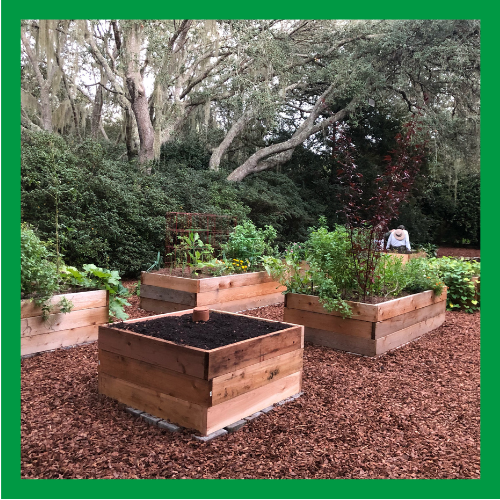
The Cedar raised garden bed is a beautiful addition to any home. Our most popular variety is the 4’x8’x16″. This garden bed is perfect for growing veggies throughout the year and provides 32 sq/ft of growing space.
Starting @ $800
The Wave
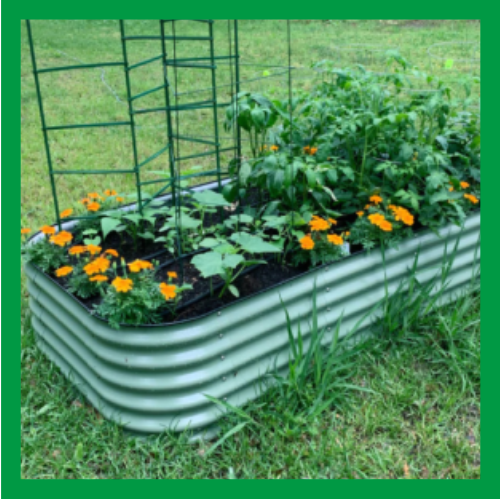
The Wave is a trending garden bed that allows you to select between shapes, colors, and sizes. Still, our most popular is the 4’x8’x17″.
Starting @ $800
The Cowboy

These Cattle trough garden beds are by far some of the most durable garden beds imaginable. They last pretty much forever. Great way to grow food on hard surfaces.
Starting @ $800
Corten Steel
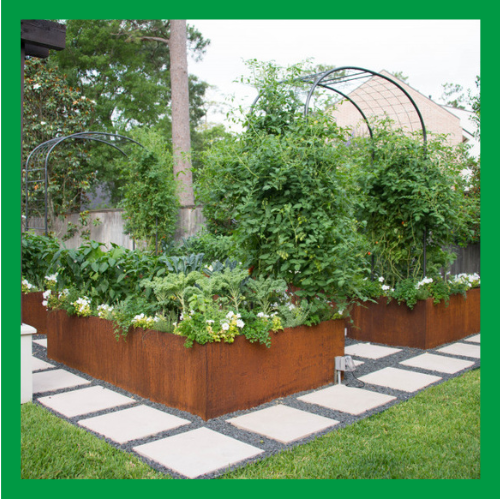
Custom Corten Steel garden beds. Can be centerpiece beds or accent pieces with flowers or herbs. These garden beds are extremely durable, and transform with the weather to be absolutely gorgeous pieces of a landscape.
Starting @ $2,000
Stone

Custom stone beds that can be made of a variety of block or stone materials. Can be retaining wall or a variety of garden beds.
Starting @ $1,000
Felt beds

Felt beds are a great way to grow food with a low budget. They are perfect for growing all kinds of veggies especially sweet potatoes.
Starting @ $350
In-ground Edible Landscaping
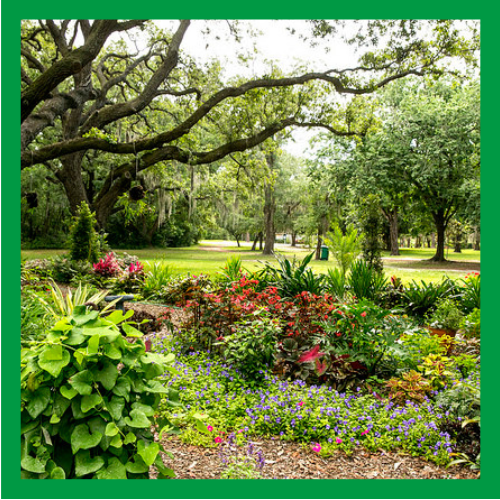
Edible/Herb/Native Medley
Wide variety of purposeful landscaping.
Starting at $500

Edible Arrangements
Utilize your space to grow food.
Starting at $500
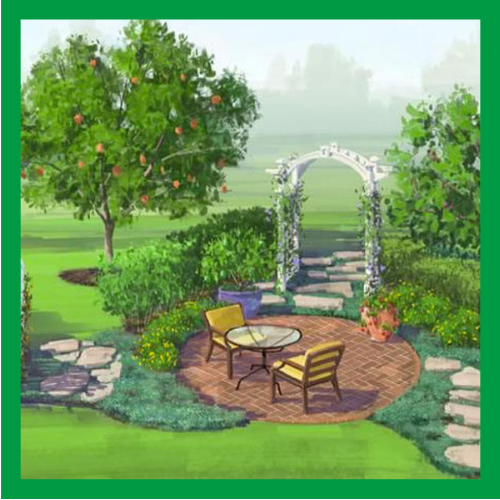
Perennial Garden
You just can’t capture the beauty of what an edible landscape can offer. The smells, the tastes, and the health that constantly exudes from the space is amazing.
Starting at $500
Fruit tree orchard packages
Fruit Trees:
Pollinator Gardens
Bring color to your space! Exude life in your yard! Starting at $500.

Butterfly Garden
A garden curated specifically for butterflies. Specific types of our plants bring in specific types of butterflies, and native pollinator species. You can go to the native plant society’s website to learn more.

Seasonal Flower mix
Can be used in the form of a meadow in your landscape, can be a section of your space where we can fill in with mulch and fill up with flowers seasonally. Contact us to learn more about our seasonal flower program.

Perennial Native
A wonderful landscape accent that can be used to create beautiful pollinator spaces in your yard. We use native plants that are purposeful to the environment and create habitat for our native species.
Our Techniques
The olla watering system is really really old. In fact, humans have been burying clay pots as a system of irrigation for as much as 10,000 years based on archeological findings.
If done right, it can be one of the simplest and most effective irrigation methods available. However, we have found it only works best with more mature plants, not seeds. Our drip irrigation combined with hand-watering is going to be the more effective method for getting your seeds to germinate. Once the plant has grown, the ollas will work really well.
1. Bury an olla up to its neck in the soil
2. Fill it up with water
3. Plant roots will grow towards the areas of soil that are moistened as water seeps through the porous material of the clay.
It all starts with the soil! Most of what happens in the garden happens underground out of sight and all to often, out of mind. The soil blend you use must be rich with nutrients and vitamins essential for your crops to have the immune system they will need to grow strong and healthy. Also, the better quality soil, the better pest resilience your crops will have.
Our soil blend is designed to foster the fungal, biotic, microbial, and insect life that makes the magic happen.
Layers:
- Weed Barrier: Cardboard functions as a great way to hinder weeds while fostering a healthy environment for life to enter into the garden bed.
- Mulch – Sustainable layer that promotes drainage while slowly decomposing in order to promote fungal and microbial life while adding carbon to the soil.
- Compost – Where the mulch is headed nutrient-rich soil full of life. This is the lowest part of your garden that roots will grow into. This adds nitrogen and phosphorous to the soil!
- Perlite/ Vermiculite – A water and nutrient retaining substrate made of volcanic rock and adds calcium and magnesium to the soil.
- Peat Moss: A permeable addition to fluff up the thick compost for seedlings to penetrate the surface layers with ease, and hold moisture.
- Pine Straw/ Hay – A thin layer of pine straw that shades plant roots from the sun radiation and prevents erosion by diffusing rainfall gently into the soil below. Plus, it looks nice!
Something that might not be intuitive to new gardeners is that you should never pull out weeds or an old plant by the roots. Why you ask? Because of all that work we put into building good soil!
When most of the critters and fungi that live in healthy soil are exposed to sunlight through activities like tilling or pulling weeds, they are killed by the UV light. While this might not seem like a problem, it takes time for soil life communities to heal, so each time the soil is disturbed that timer is reset.
Won’t the roots that I’m leaving in the ground cause problems for my new plants?
As a matter of fact, as the old roots start to dissolve and return their nutrients to the soil, they’ll leave passageways that absorb water more efficiently and keep soil texture fluffy and loose.
What about weeds or root vegetables?
Ok, so there are some exceptions. Sometimes you have to dig something out or pull something out, but the best practice is just to disturb the soil as little as possible.
What else should I know about soil health?
Boy oh boy – what isn’t there to know!? The good news is, we’ve done most of the homework for you. Your raised bed will only require a “refill” of compost and pine straw each season in order to keep the top layer mulched, moist, and fertile. We provide this service too, with rates based on the square footage of your garden.
If you want to know even more about this gardening philosophy, you can read about it here.
When it comes to deciding what to plant, it’s easy to skip straight to the table. In other words, it makes sense to grow what you like to eat, right?
Well, of course it does, but getting a healthy harvest is all about creating useful plant communities that share resources effectively instead of competing against one another.
Our pre-configured templates make sure that your harvest is supported by plants of different root depths, that require different nutrients and repel or attract insects according to the needs of the other plants around.
Need more guidance?
Schedule garden maintenance services today
When most of the critters and fungi that live in healthy soil are exposed to sunlight through activities like tilling or pulling weeds, they are killed by the UV light. While this might not seem like a problem, it takes time for soil life communities to heal, so each time the soil is disturbed that timer is reset.
Won’t the roots that I’m leaving in the ground cause problems for my new plants?
As a matter of fact, as the old roots start to dissolve and return their nutrients to the soil, they’ll leave passageways that absorb water more efficiently and keep soil texture fluffy and loose.
What about weeds or root vegetables?
Ok, so there are some exceptions. Sometimes you have to dig something out or pull something out, but the best practice is just to disturb the soil as little as possible.
What else should I know about soil health?
Boy oh boy – what isn’t there to know!? The good news is, we’ve done most of the homework for you. Your raised bed will only require a “refill” of compost and pine straw each season in order to keep the top layer mulched, moist, and fertile. We provide this service too, with rates based on the square footage of your garden.
If you want to know even more about this gardening philosophy, you can read about it here.
